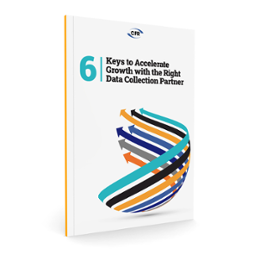
Understanding Primary Market Research vs. Secondary Market Research
 One of the most important distinctions in the market research world is that between primary market research vs. secondary market research. While they are not as profoundly different as (to invoke Mark Twain) “the lightning bug and lightning,” they are nevertheless separate paradigms of market research, and need to be approached accordingly.
One of the most important distinctions in the market research world is that between primary market research vs. secondary market research. While they are not as profoundly different as (to invoke Mark Twain) “the lightning bug and lightning,” they are nevertheless separate paradigms of market research, and need to be approached accordingly.
What is Primary Market Research?
Essentially, primary market research is conducted originally and exclusively in order to achieve a specific research objective. For example, a business that wants to know the viability of introducing a new product may test this possibility by conducting focus groups, in-depth interviews and surveys (or more likely, by hiring a market research firm to take the lead on this data gathering, analysis and reporting).
What is Secondary Market Research?
Secondary market research is the process of exploring data and information that already exists (i.e. it was originally generated by a third party). For example, a business that is planning to develop a mobile app may want to know if it would be better to focus initially on an iOS or Android app. As such, the business could conduct (or have conducted on its behalf) secondary market research that includes visiting various tech websites to see what experts recommend, read case studies on what other companies in the marketplace have done, and so on.
Pros & Cons of Each Approach
By far, the biggest advantage of primary market research is that if everything is handled properly (e.g. identifying the problem, designing the method, collecting data, correcting for bias, etc.), then the quality of insight is unrivalled. This is why all of the world’s biggest companies, such as Google, Coca Cola, IBM, Apple invest millions of dollars in primary market research each year (and by the way: you can ignore what you may have read about Steve Jobs’ famous aversion to market research -- Apple is one of the biggest producers and consumers of market research in the world, which is a big reason why Apple is also the most valuable brand on the planet!).
At the same time, primary market research takes time and requires a suitable budget. This does not mean it is expensive, but it is not a “quick and dirty” approach to market research, or a “thumbnail sketch.” It’s a legitimate business investment and, when it is done right, frankly it is a bargain.
As for secondary market research, the two biggest advantages are that, compared to primary market research, it is relatively fast and inexpensive. Note we did not say “cheap,” because even some industry analyst reports can cost several thousands of dollars – and some are more than five figures. Similarly, it can take several days or weeks to scour relevant online and offline sources, and so there is both a labor cost and an opportunity cost involved. However, compared to primary market research, secondary market research is significantly less costly.
The biggest drawback of secondary market research is that it may not deliver the data-driven insights that a business needs to solve a problem. The information may be difficult to find, or it may not be relevant or recent enough. Furthermore, unless it is handled by a third party (e.g. market research firm), with secondary research there is a risk of “confirmation bias,” which is when subsequent information is perceived to confirm or validate a pre-existing belief. For example, if a business has a preference for developing an Android app vs. an iOS app, then there is a possibility that the information it gathers will support this, even if this may not actually be the case based on an objective evaluation of the available material.
Which One Is Right For Your Business?
In mind is that in many cases, choosing between primary market research and secondary market research is not an “either/or decision”. Primary and secondary market research can complement and augment each other to create a richer, more accurate picture.
To learn more about primary market research and secondary market research – and how they can both fit into your overall research aims and objectives – contact the Communications For Research team today. You’ll speak with co-CEO, Colson Steber, who can turn your business goals into reality through the power of data-driven market research. He is an expert at identifying key questions your business should be answering and devising market research plans based on your budget and timeline.



